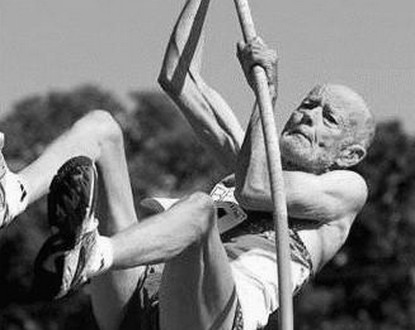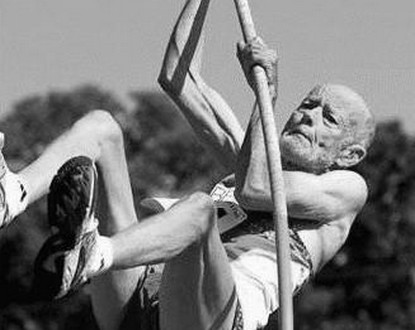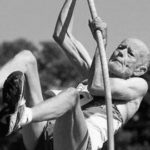High-level athletes commit daily to promoting France, their performances thrill us, their medals fill us with pride, and they inspire many to practice sports. Why is there a specific arrangement concerning the right to retirement for high-level athletes?

To perform on an international stage that gathers new participants every day, one must exert themselves tirelessly. The competition is increasingly tough, and this reality forces high-level athletes to dedicate between 20 and 35 hours per week to training to hope to perform at the highest level.
This athletic demand cannot be reconciled with a traditional education and professional integration. How can one spend 30 hours a week in the training room when, at the same time, these athletes should be in the classroom or at their workplace?
Therefore, it was necessary to adapt the training programs to make them compatible with the sports requirements. Obviously, these efforts must be continued to constantly adapt the curriculums to new constraints of high-level sports, but the current situation allows athletes to “no longer have to choose.”
To meet this dual objective of sports and education, it was necessary to extend the programs to allow athletes to maintain their daily training.
While a typical student devotes almost exclusively to their studies, the high-level athlete splits their time between the gym and classes, not to mention the numerous trips abroad for training camps and competitions.
Therefore, athletes spend fewer hours each week on their education and need more time to complete the same curriculum as regular students. This is not about distributing substandard diplomas but rather extending their education duration so that it does not compromise their sporting performance goals.
Athletes sometimes spread the workload typically completed over a school year across several years to free up time for training, engaging in training camps, and competing. One cannot ask an athlete to fully focus on winning an Olympic medal while simultaneously focusing on obtaining their diploma.
Thus, it is necessary to adapt the academic pathways, and athletes sometimes finish their programs up to five years after other students.
Once this program is completed, they should normally seek employment, enter working life. However, what employer would commit to an athlete who trains over 30 hours a week and spends a good part of the year in training camps or competitions, often abroad? Some benefit from a professional integration agreement, in connection with employers, allowing them to have an adjusted job, but many athletes are not so fortunate.
We therefore arrive at a particularly unfair situation where athletes who participate in France’s prominence fall behind compared to the regular population.
They finish their academic training later and must also postpone their entry into the job market to preserve their sports project.
This situation does not concern professional athletes who have the chance to sometimes live very well from their passion.
These athletes contribute and are not penalized in terms of retirement.
But not all are so lucky, and many athletes contribute much later and often only at the end of their sports career, which tends to lengthen.
This results in a delay in the age at which they could receive a full pension. Their high-level sports practice penalizes these athletes by delaying their entry into the job market. It is for them, for these athletes who commit daily in the hope of making the Marseillaise resonate on the largest international podiums without having an income, that the measure will be established.
It is not about giving them a particular advantage but rather rectifying an injustice related to their late entry into the job market. The President of the Republic had reminded us, “when wearing the French team jersey, you serve your country” and the state cannot allow these athletes to be penalized compared to the rest of the population.
The 2012 Social Security Financing Bill will therefore include an article regarding the pension rights of high-level athletes.
Presentation of the system
High-level athletes, registered on the ministerial list and whose professional situation does not allow them to acquire pension rights, will benefit from a specific pension system.
The latest survey conducted by the Ministry of Sports with sports federations helped specify the number of athletes concerned: 2,000 athletes over 20 years old do not have sufficient income to contribute to the basic pension scheme.
The system will allow periods of registration on the list of high-level athletes to be assimilated to old-age insurance periods, with the state compensating the cost of this validation of quarters by paying a contribution to the old-age branch of the general social security scheme.
The financial burden of this measure cannot lie with the athletes concerned, due to the insufficiency of their income, so the state will assume the financial responsibility of the system.
The implementing decree will frame this system with age limits (20 years or older), income (75% of the social security ceiling), but also by a maximum number of quarters of assimilated periods acquired under the status of high-level athlete (16 quarters).
The high-level athlete will benefit from this validation without prior affiliation conditions (while this condition applies to other categories of assimilated periods), meaning they will not need to have already contributed to the general scheme to benefit from the measure.
For high-level athletes over the age of 20 who do not have sufficient resources, the state will fund the validation of quarters, up to 4 years of contributions. The age of the beneficiaries has been determined so as not to grant a particular advantage compared to the rest of the population, while allowing the correction of an unjust situation.
The system could come into effect on January 1, 2012. It will concern high-level athletes listed by the minister responsible for sports in November 2011.
To benefit from the measure, the concerned insured will need to provide the Sports Department (Ministry of Sports) with proof of their eligibility for the system. The Sports Department will check the eligibility of high-level athletes and transmit to the CNAVTS the list of beneficiaries, as well as the number of validated quarters for assimilated periods.
The CNAVTS, on its side, will have to record these quarters in the beneficiaries’ account. It will invoice the Ministry of Sports, according to a fixed cost set by decree, the cost induced by the validation of these quarters.
This system is a strong commitment to high-level athletes. The system thus goes further than other quarter purchasing systems and is financed by the state.
Cost of the measure
The estimations are based on the number of high-level athletes aged 20 who would not validate 4 quarters per year.
The measure is expected to cost between 6.1 million and 9 million euros depending on the total number of athletes concerned.
Source: CROS/CTAZ



